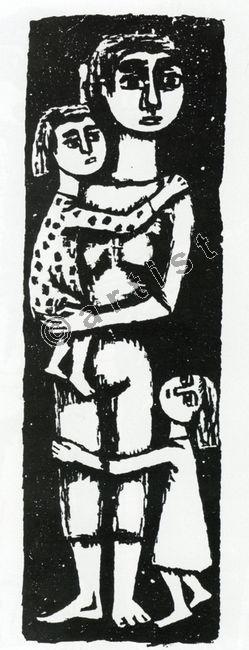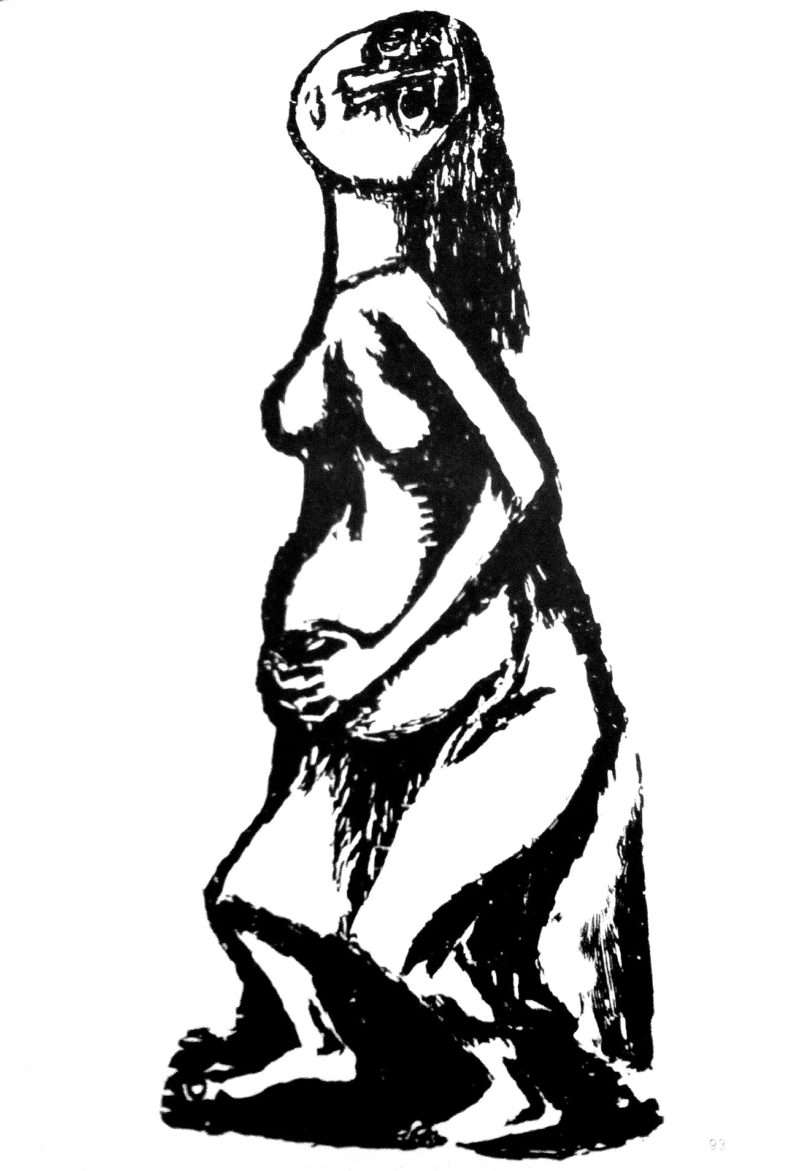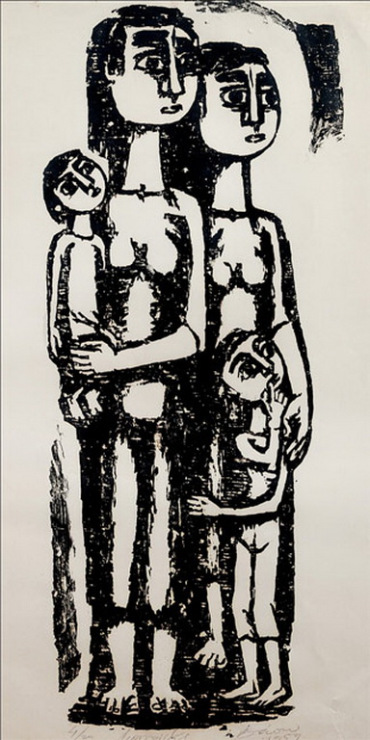Part two (Edited)
Principled insubordination and Mother’s Day….
“Make time in your life to listen to your own voice. Do not let it get drowned out by others. Your voice is yours and yours alone. Stay in touch with it and use it.” Maria Kennedy Shriver
“Art is not a game for loafers / idlers. It is lightning, it is pain, it is birth “(from the handwritten notes of Vasso Katraki)

The first part of today’s post draws on Todd Kashdan’s book on principled insubordination, The Art of Insubordination. In this second part I briefly focus on some of the ways that Kashdan suggests can help us bring about personal and social changes. I’m also sharing an extract from a piece written by Todd Kashdan for Mother’s Day. I chose it for its title, and also, because it relates to themes in the book and the piece I have written today, like intellectual humility, the categorization of people based on outdated or biased assumptions, practices and attitudes. Finally, I’m accompanying this post with motherhood related images from Vaso Katraki (1914 – 1988) the leading Greek engraver in the second half of the 20th century. She started engraving in wood during the German occupation, later produced book illustrations and engravings of the daily scenes of the people and landscape of her home town. In the 50s she began engraving in sandstone using an original technique that earned international recognition. Her paintings and engravings document the intense difficulties of the Greek people during and after World War II. In 1967 she was exiled to a barren island by the military junta on the day that it took power. She spent nine and a half months on the island, where the exiles suffered from hunger, thirst and beatings and was released in 1968 after international pressure. Returning to her work this May I was moved, and also, remembered that two framed posters of her engravings hung on the walls of all the places I lived in during my twenties.
A. How to go about principled insubordination
Factors that can support insubordination and change

Kashdan refers to research that suggest that one basic factor that can instigate change, is flexible consistency. He writes that scientists have established that people can instigate change more readily if they’re consistent in what they say, without being overly rigid. For instance, in 1994 Dr. Wendy Wood and her colleagues used a statistical tool to synthesize 143 experiments that examined the capacity of minorities to exert influence, and the single best thing people could do was to present a consistent message over time. However, being consistent is not enough; we also need to maximize the persuasive potential of our message. One way to do this is to work from the inside out, because the audience is more likely to listen to our message if they view us as a member of their in-group or as someone who shares a common identity or interest. For instance, in one study student participants spent more time systematically processing a message and retained more information if they thought minorities from their tribe wrote it. Seemingly, minorities have special persuasive powers, if they articulate how a common identity exists between themselves and their audience. Kashdan writes: “When someone in an in-group thinks differently from the rest, that dissenter elicits a spark of curiosity in the majority. Two questions pop into audience members’ heads: “Why does this person think differently from the rest of us?” and “What information does this person have that I don’t?” And even though in the short term, deviance might cause tension or conflict in the group, it can also bring attention to new ideas, unresolved problems, or a broader list of options.
Another way to do this is to spark our audience’s curiosity, not their fear. If we frighten or alienate people, no matter how true or great an idea is it will not attract people’s attention. When considering our presentations it is important to think about our audience, show them respect, and empathize with their fears and needs. Kashdan provides an example to affirm this point. He tells us the story of Dr. Ignaz Semmelweis, known as a pioneer of antiseptic procedures. who back in 1847 before medical science knew much about germs, became involved in the problem of puerperal infection, the scourge of maternity hospitals throughout Europe, and claimed that simple hand washing could prevent obstetrical complications and reduce mortality rates. The interesting fact is that doctors tried it and the death rate of patients plummeted dramatically, and then tragically, nobody listened. It would be another century before the medical profession adopted hand washing as standard protocol. Kashdan writes that Dr. Semmelweis had assumed that data and strong arguments sufficed to persuade the mistaken establishment, but they didn’t. He suggests that as a principled insubordinate, one should not shame, blame, or maim status quo enthusiasts, but instead adopt a conciliatory approach and friendly tone.
A third thing that we need to have in mind is objectivity. We always come across more persuasively when the claims we make and the ideas we suggest appear objective and verifiable. Including science and research findings and other supportive material in our presentations increases our chances of influencing or convincing others. Research findings suggest that when a contention seems objective and evidence-based, we tend to open our minds to it, but when we perceive it as subjective, we close down. The fourth thing that Kashdan discusses is the need for insubordinates or dissenters to project their courageous self-sacrifice because people can understand how scary it is to publicly interrogate the status quo. People who speak out or promote ideas that question the establishment will likely incur social costs and persecution because of the deep commitment they feel to their cause. Kashdan writes: “The life of a rebel can truly suck. But there’s a plus side: when attempting to convince people that their ideas have merit, rebels can turn the psychological toll they suffer and the social dangers they face to their advantage. … Rebels can alter perceptions by engaging in so-called courage-signaling, in which the personal sacrifices and costs for standing out from the crowd are made visible.”
Enlisting trusted allies is also useful when trying to change the world or some small aspect of it because we need support through the tough times. Kashdan writes that we need to be discerning about whom we select, and science suggests we would be better off seeking out allies who can enhance our intellectual and emotional capabilities, contribute insight and wisdom, help us solve problems, and expand our sense of self. Some people leave us charged up after we spend time around them, and others sap our energy to the point that as Kashdan puts it we want to curl up into a ball and avoid the human species. He refers to Dr. Kim Cameron, who talks about “net positive energizers”, and further writes: “Seek out people who complement you. Partners who are interesting, challenging, and a source of enlightenment … Also, seek out allies who can expand your emotional reach.”
However, seeking out people who can expand us isn’t easy, and once we’ve identified potential allies, we need to build strong, meaningful relationships with them, and one of the best ways to do this, according to Kashdan, is by confronting painful challenges together. Tackling difficult challenges and sharing painful moments together may not be easy, but making ourself vulnerable around others can leave us feeling more connected and courageous. In the book there are references to studies on interpersonal relationships that Dr Michael Argyle and Dr Monika Henderson sifted through in order to distill six fundamental features of friendship. “Good friends (1) are there when their partners require emotional support; (2) volunteer help in times of need; (3) stand up for partners in their absence; (4) trust and confide in their partner; (5) strive to make partners happy in their presence; and (6) share triumphs and successes. Break these rules, and friendships disintegrate.” In addition, it is necessary to balance conformity / belonging and uniqueness. Maintaining this balance is not a one-time effort. Instead we need to pay attention to changes in individual behavior, the group’s norms, and the group’s success or failure. Kashdan writes: “Help people feel certain that they belong in the group and also are valued for expressing their uniqueness. ….. Regularly attend to both of these psychological needs and you will fire up people’s motivation to express unique contributions.”
When questioning any status quo, or fighting for human rights and change, we also need to cultivate psychological flexibility and resilience. This might involve checking in with our motivations for dissenting, acknowledging any discomfort and the unpleasant or difficult emotions experienced, and becoming aware of why we will benefit from mental fortitude. We need to acknowledge the distress that arises from challenging conventional thinking, otherwise, we become weaker and less effective. Kashdan suggests ways to do this. For instance, by labeling emotions it becomes easier to manage them. Dan Siegel claims that when we name an experience we tame it. When emotions are felt they become manageable and can be harnessed into goal-directed energy. It also involves becoming aware of our mental content and getting in touch with our coping mechanisms (some can be helpful and others destructive), in other words, the things that we tend to do to escape from unpleasant thoughts, feelings or sensations. Finally, it is important to gauge our opportunities.
It is also important to nurture critical thinking and cultivate curiosity because they foster intelligence, learning and growth. They help us embrace complexity and refrain from categorizing people in rigid and overly simplified ways. In order to do this we can start asking more and better questions. Kashdan claims that “The highly curious among us not only persevere longer during difficult tasks, but perform better and tire less.” Also, valuing curiosity and being open to assessing new ideas prevents us from thinking that we know more than we do, which can be problematic. In the book there’s reference to research that has found that the less someone knows about a topic, the more likely they are to hold strong opinions about it. We seem to become more close-minded when we possess either too much or too little knowledge, which often leaves us overly confident in existing knowledge and not open to considering new information.
Moreover, it is important that we become aware of our human psychology, which makes us vulnerable to the claims and assumptions of authorities. Humans tend to be close-minded by nature and to hold tightly to belief systems, especially if powerful authorities promote them, because they provide a kind of structure and a sense of safety. Kashdan writes that when someone comes up with a new or seemingly provocative idea, we feel anxious, but as he says “we need to feel unsettled and uncertain at times— that’s how we grow. But it ain’t fun. Whistleblowers, political activists, artists, scientists, and others who dare to “think differently” are agents of social improvement.” He claims that the incurious among us are more likely to unthinkingly support the status quo and render certain beliefs and speakers they might consider as outsiders or dissenters off-limits. He suggests we can actually train ourselves to listen to non-conformists, focusing less on the messenger and more on the value of the information itself. We also often resent individuals who speak truth to power or break the silence for making us painfully aware of our own limitations or fears or lack of courage.
Finally, in the book it is suggested that in order to maximize a society’s collective intelligence, we need to build a culture that affirms values like autonomy, critical thinking, freedom of thought, and the desire to seek out useful information regardless of where it originates. We also need to increase the total number of non-conformists among us because . they are valuable contributors to progress and a better quality of life. Kashdan writes that if millions of us engage in these processes we’ll be able to build a safer, more prosperous, more dynamic, and more harmonious society. And even if we don’t obtain our intended outcomes our impact may be greater than we think. Kashdan writes: “Lasting change is slow, frequently bubbling below the surface as others contemplate whatever you said or presented. Individual results vary, and race, sex, gender, and visible personality features factor into how your expressions of principled insubordination are interpreted by others. Don’t expect to be liked. Play the long game…… Mainstream thinking does evolve. With each act of principled insubordination that takes hold, we move closer to a better world.”
B. Mother’s Day for the Motherless by Dr. Todd Kashdan

“……….. A lesson on grief: Do not pretend you hold privileged access to someone’s emotional reactions because of a similar life event……You both experienced the death of a parent. The unique parameters of difficult events beg for intellectual humility. I lost my mom at the age of 12 and people regularly tell me how I’m messed up because of it. When I interviewed for graduate school in 1998, a Professor at the University of Virginia submitted a barrage of questions about my childhood. Following candid answers, he replied something to the effect of, “You must have suffered greatly…you are supposed to be in prison, a drug addict, congratulations for making it this far!” I remember the mental chatter that I failed to voice.
No, I didn’t suffer greatly. I found refuge in friends, sports, writing, and lovers. Do not define me by my loss. Do not impose your invented narrative on me. What the fuck makes you think prison was a possibility?
I know people often mean well by taking a guess at someone’s thoughts, feelings, and history. People have reasons for why they lead with presumed confidence in what adversity means to someone else. Know this: projecting your own thoughts on an event create unnecessary barriers to connection. Instead of conveying an illusion of knowledge, offer presence…….
I can’t imagine what you’re feeling. / I have no idea what you went through, but if you ever want to share something, anything, I’m here for you. / I don’t know what to say but know that I am here for you. / I’m not sure how to help but I’m not going anywhere
My twin brother and I were raised by a single mother. From my remembrance, I never felt deprived with only a mom. I never felt an insufficient number of hugs and kisses. I have memories of her reading to me, never missing a day. I have memories of her tucking me in, asking questions about my friends and plans for tomorrow. I remember her lying beside me when nightmares arose. But they are faint, slipping away.
After a long bout of cancer, my mother died on Thanksgiving in 1987. I had just turned 13 years old. I don’t recall many details during this time period. I remember being brought to the hospital only to be told that my mother refused to see me. She didn’t want my memories tainted by the sights and smells of deterioration. I tip-toed out of the waiting room to peer through the small window of her hospital door. I witnessed a frail body, gaunt face, and bald head that would never hug me again……..
Sometimes snapshots and mental videos of my childhood appear on random Tuesday afternoons. Recovered fragments from my childhood offer immeasurable value. Much of what I know about my childhood stems from second hand observations. Apparently, I was a “momma’s boy” and could be found clinging to her like a skittish monkey or lying in her lap jotting words into notebooks. These tales intrigue me, representing unfulfilled desires for more. Supposedly my personality is quite similar to hers — emotionally intense, extremely sociable, open to new experiences, and a lust for life. She raised twin babies on her own from the age of two onward. I’ve been told I have the same resilience and resolve. The older I get, the more perplexed I am about how she parented as I don’t recall being deprived of anything. For me, these comparisons are aspirational and motivational.
For over 2/3 of my existence, on Mother’s Day, I remain motherless……
But I feel a sense of certainty that I was deeply loved. It will always be an emotionally potent day. Sadness does not detract from my well-being. Diving in and exploring the pain brings me closer to essential elements of who I am and the decisions of which paths to choose. I think of the path that would lead her to put an arm around me in pride and joy. And then I know. I wish the same level of poignancy for everyone else.
Relish your mom, father, or whoever served as the bedrock foundation in those formative years. Don’t let another day go by without detailing the validation, hope, and potential they instill.”
